6 Key Benefits of Outdoor Education for Primary School Students
Outdoor learning is an active, experiential approach that integrates the outdoor environment as a crucial component of the educational experience. It aims to transform experiences into improvements in knowledge, skills, behaviors, and attitudes, which are categorized into two main groups: knowledge and skills, and behaviors and attitudes.
In the domain of knowledge and skills, the focus includes personal and social competencies such as cognitive abilities, affective skills, psychomotor skills, empathy, cooperation, and collaboration. Additionally, in terms of behaviors and attitudes, outdoor learning helps foster positive attitudes toward health, community, and sustainability.
Outdoor education offers many advantages, making it a valuable component of primary school curricula. This article highlights the benefits of outdoor education in primary schools for educators, parents, and students. Let’s get started!
1. Foster Intellectual Development and Academic Motivation
Early childhood education, particularly when integrated with outdoor learning, offers noteworthy benefits that enhance intellectual development and academic motivation. Two primary benefits of outdoor education in primary schools regarding intellectual and academic development are outlined below:
Academic Benefits
Outdoor learning offers several academic benefits, such as an increase in scores and better attendance. Numerous studies indicate that outdoor-related classrooms can boost student performance in subjects such as social studies, science, language arts, and math. To illustrate, research revealed that students participating in outdoor science programs improved their test scores by 27% (Lieberman et al., 2020).
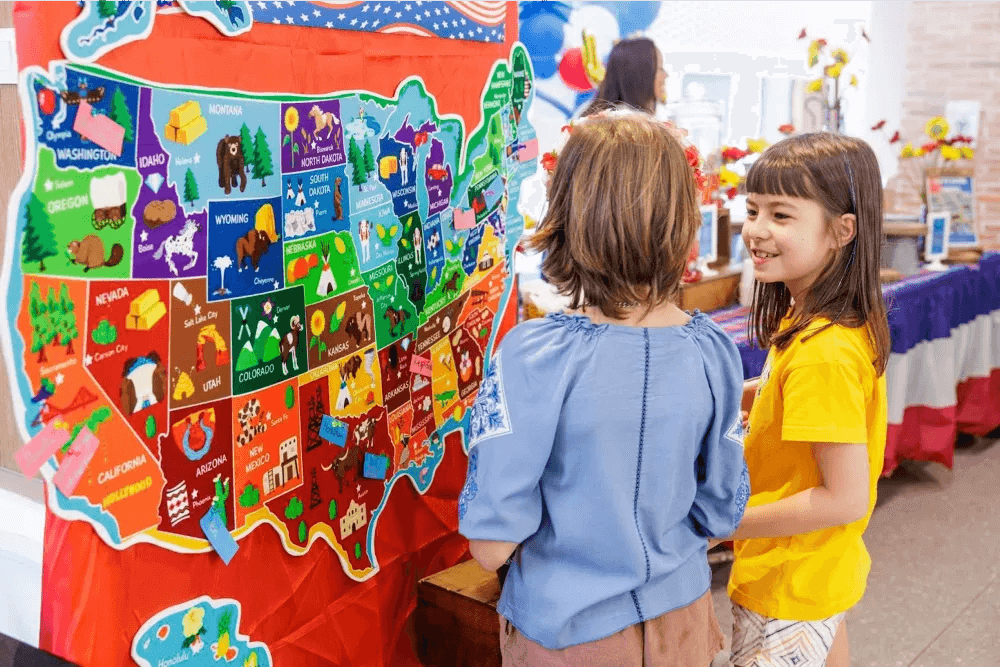
The same study found that students engaged in outdoor learning scored higher on 72% of assessments, including math and science, than their peers in traditional settings. Moreover, increased engagement in outdoor learning programs has been linked to higher student attendance rates, demonstrating that such environments enhance motivation and participation.
A practical instance of this benefit is observed in schools where students participate in outdoor math activities, such as measuring and calculating the dimensions of garden plots. This hands-on approach makes abstract mathematical concepts more tangible and increases students’ enthusiasm for the subject, improving assessment performance.
Cognitive Development
Studies indicate that outdoor education supports cognitive growth by offering experiences that are cognitively, linguistically, emotionally, socially, and physically enriching.
According to Wells (2009), children’s academic achievements improve with outdoor experiences, while Dietz (2002) highlights that outdoor learning environments meet diverse developmental needs. This approach helps children develop problem-solving skills, enhance their understanding of abstract concepts, and foster holistic growth.

For instance, children involved in outdoor science projects, such as studying ecosystems or tracking animal behavior, gain practical problem-solving skills and a deeper understanding of scientific principles.
2. Enhance Physical Well-being and Physical Development
The benefits of outdoor education in primary schools extend beyond academic and cognitive gains to significantly enhance physical well-being and development. Engaging in outdoor activities contributes to both health improvements and the advancement of physical skills, which are crucial during early childhood.
- Health and Wellbeing Benefits: Natural air circulation and elevated oxygen levels from being outdoors help improve respiratory function and increase energy levels. Exposure to sunlight boosts vitamin D production, which is essential for bone health; cardiovascular function, and insulin regulation. These factors collectively contribute to better sleep patterns and overall physical health.
- Example: Children participating in outdoor learning activities, such as gardening or nature walks, often display improved general health markers. A study indicated that children in outdoor programs had higher vitamin D levels, contributing to better bone density and reduced incidence of illnesses compared to indoor environments (Mead, 2008).
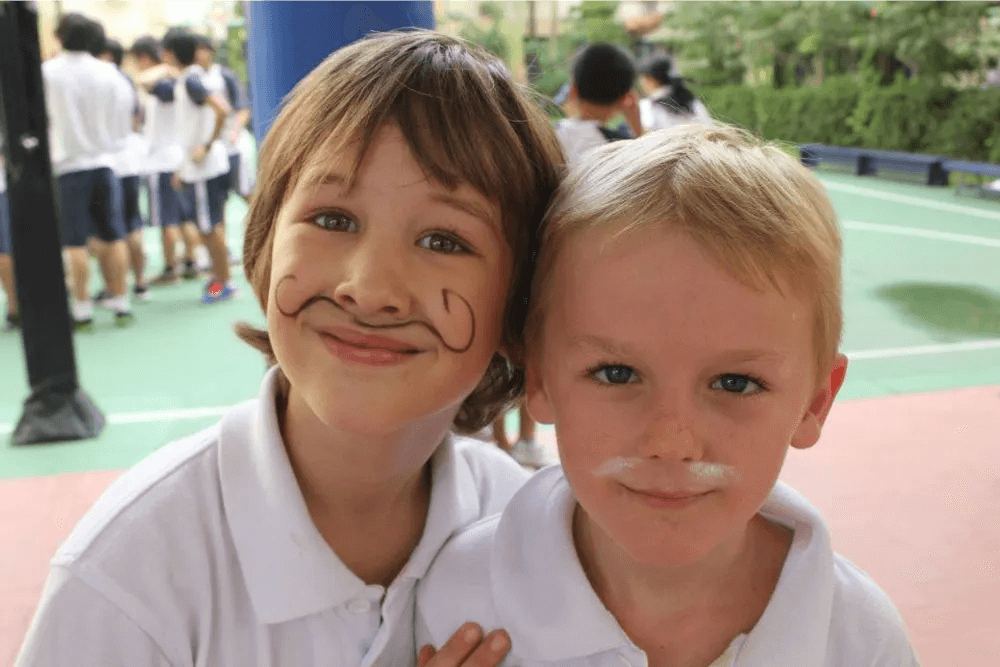
- Children’s Physical Development: Natural environments provide dynamic and varied terrain that challenges children’s physical abilities. Research by Fjørtoft (2001) demonstrated that children playing in forested environments performed better in motor fitness tests than in traditional playgrounds. Features such as slopes, rocks, and open spaces promote activities like climbing, running, and jumping, which are essential for developing gross motor skills.
- Example: A child regularly engaging in outdoor activities like climbing trees or navigating uneven ground will develop more vital gross motor skills. To be specific, a child practicing balance on a tree trunk or running through a grassy field improves coordination, muscle strength, and agility.

Physical and Behavioral Development
- Physical and Behavioral Development: Outdoor learning environments support physical activities that contribute to children’s behavioral improvements. Active play in natural settings helps regulate energy levels, reduces stress, and improves overall mood. Teachers and parents have observed that children involved in outdoor activities are more engaged and exhibit fewer behavioral issues. Moreover, activities in open spaces with fresh air and natural sounds contribute to sensory processing and relaxation, which contrast with the overstimulating indoor settings. Discover our playground ideas for primary schools to develop students’ physical well-being and physical development.
- Example: Teachers’ observations indicate that children who participate in outdoor activities such as running, playing sports, lying on the grass, and observing the sky are calmer and more focused when they return to the classroom. A student who has spent time playing in a park may return to class with improved attention and reduced anxiety to concentrate on academic tasks.
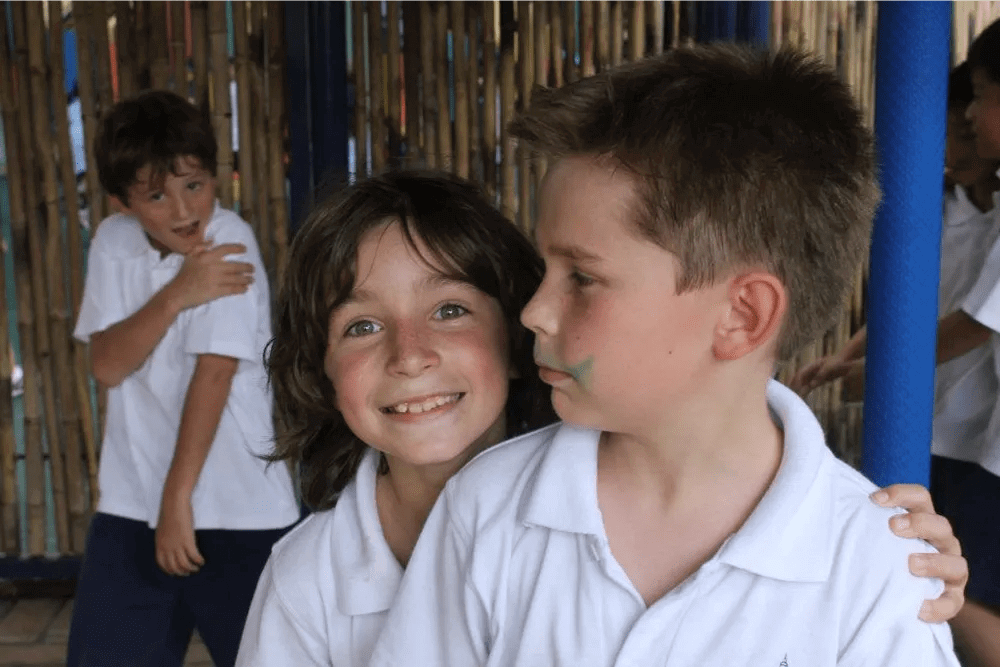
3. Boost Self-concept
Enhancing children’s self-identity and confidence levels can have substantial benefits of outdoor education in primary schools. This development can be achieved through two main avenues:
- Social-Emotional and Cognitive Development: Outdoor learning environments greatly contribute to children’s social-emotional and cognitive growth. Engaging with nature fosters creativity, problem-solving skills, and independence. Studies indicate that daily exposure to natural settings improves cognitive abilities and concentration, particularly in children with Attention-Deficit/Hyperactivity Disorder (ADHD).
- Example: Taylor and Kuo (2001) found that children in outdoor settings rated their experiences more favorably and exhibited better focus than in conventional classroom environments. This exposure to nature enhances cognitive functions and builds confidence by providing children with opportunities to tackle and overcome challenges in a stimulating environment.

- Increased Confidence Through Nature Activities: Spending time in nature has boosted children’s confidence. Research indicates that most children feel more capable and confident after participating in outdoor activities.
- Example: The same study from Taylor and Kuo shows that 84% of children reported feeling capable of tackling new tasks following nature-based experiences. Additionally, improved relationships with teachers and peers were noted, with 79% of children stating that outdoor activities positively affected their classroom relationships. Such experiences reinforce a child’s belief in their abilities and contribute to a stronger self-concept.
4. Improve Social and Collaborative Skills
Promoting teamwork and communication abilities can foster effective social interactions and student collaborative skills. Outdoor education provides an ideal context for developing these competencies through the following means:
- Developing Transferable Groupwork Skills: Outdoor activities foster essential communication, leadership, and conflict resolution skills. Collaborative outdoor tasks require students to negotiate roles and solve problems collectively, preparing them for diverse group work scenarios.
- Building Existing Work Groups: Outdoor settings provide a practical platform for developing team spirit and trust. Students learn to make decisions, plan, and cooperate effectively, preparing them for more formal academic group projects.
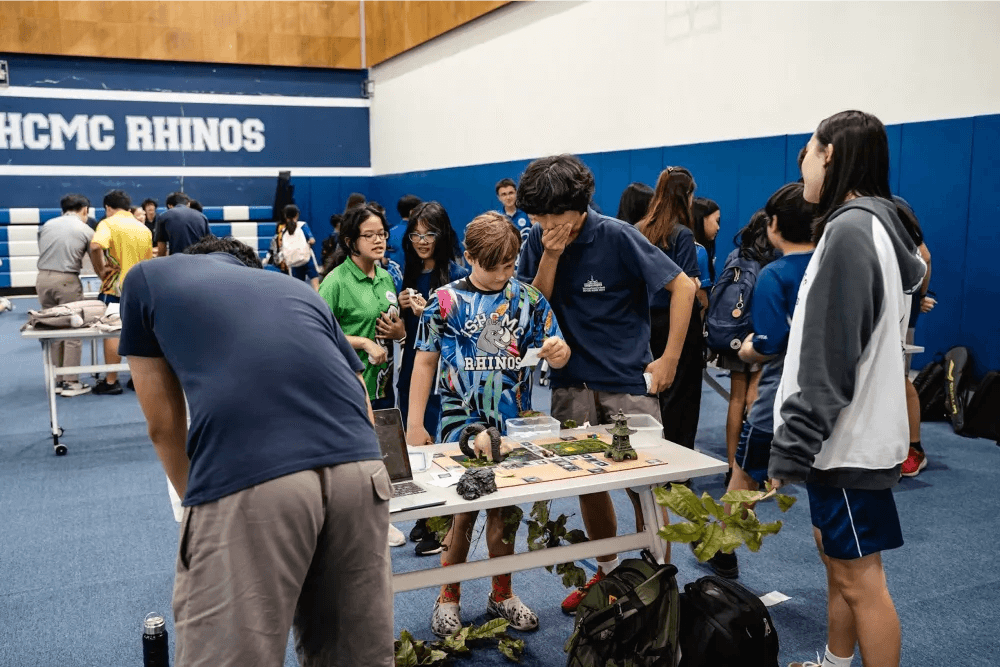
- Enhancing Attitudes Towards Groupwork: Through outdoor experiences, students build confidence and a positive perception of teamwork. They learn to appreciate the benefits of collaboration and develop a stronger team spirit.
- Increasing Social Integration: Outdoor education promotes social integration by fostering support networks and friendships. Frequent informal group interactions and collaborative behaviors contribute to a more cohesive social environment, strengthening the connections between students and between students and staff.
5. Foster a Relationship with Nature
Engaging in outdoor learning enhances students’ relationship with the environment. This approach yields several key benefits of outdoor education in primary schools:
- Positive Environmental Attitudes: Direct contact with nature cultivates respect and appreciation for the environment.
- Nature Connectedness: Sustained, emotionally significant experiences in natural settings strengthen students’ sense of being part of the natural world.

- Pro-environmental Behaviors: Increased nature connectedness leads to more conscientious environmental actions and conservation efforts.
- Emotional Significance: Engaging with nature meaningfully fosters a lasting emotional bond and promotes ongoing environmental stewardship.
According to Nisbet et al., educational interventions emphasizing emotional and sustained interaction with nature strengthen these connections and behaviors.
6. Promote Mental Wellbeing
Promoting mental well-being through exposure to natural environments offers influential psychological benefits of outdoor education in primary schools. This can be understood through two key aspects:
Stress Reduction
Engaging with natural environments has been consistently linked to reduced stress and mental fatigue. Key benefits of outdoor education in primary schools regarding stress relief include:
- Lower Stress Levels: Proximity to green spaces has been associated with reduced stress, depression, and anxiety. Studies by Taylor et al. (2002) reveal that even brief interactions with nature can alleviate mental fatigue.
- Reduced Aggression: Research by Kuo and Sullivan (2001) shows that greener environments are linked to decreased aggression and mental stress among children.
- Physiological Benefits: Viewing nature lowers physiological stress responses, enhances attention, and reduces feelings of fear and anger.

ART Theory Alignment
The Attention Restoration Theory (ART) provides a framework for understanding these benefits of outdoor education in primary schools:
- Restorative Qualities: Natural environments effectively restore cognitive functions and alleviate mental fatigue by providing a sense of being away from daily stressors.
- Soft Fascination: ART posits that nature provides gentle, engaging stimuli that allow the mind to relax and recover from intense focus.
- Extent: Natural settings are sufficiently complex and coherent to provide a break from routine concerns, thus refreshing the mind.
- Compatibility: The fit between an individual’s preferences and the environment enhances the restorative experience, as the environment aligns with personal interests and needs.
By integrating natural elements into educational settings, students can experience these mental health benefits, contributing to overall well-being and cognitive restoration.
Suggested Outdoor Learning Activities for Primary Students
Outdoor learning offers many educational benefits, including enhanced physical activity and cognitive engagement. Integrating these activities into primary school settings can significantly contribute to the benefits of outdoor education in primary schools.
1. Nature Scavenger Hunt: Encourage students to explore their surroundings and identify various natural items, promoting observational skills and environmental awareness.
-
- Materials: Outdoor Scavenger Hunt worksheet, clipboard, pencil.
- Setup: Print the worksheets and ensure students have clipboards for easy writing. Provide pencils for marking found items.
- Activity: Students explore a park or yard to find items listed on the scavenger hunt sheet. They can revisit the list to search for remaining items on subsequent outings.
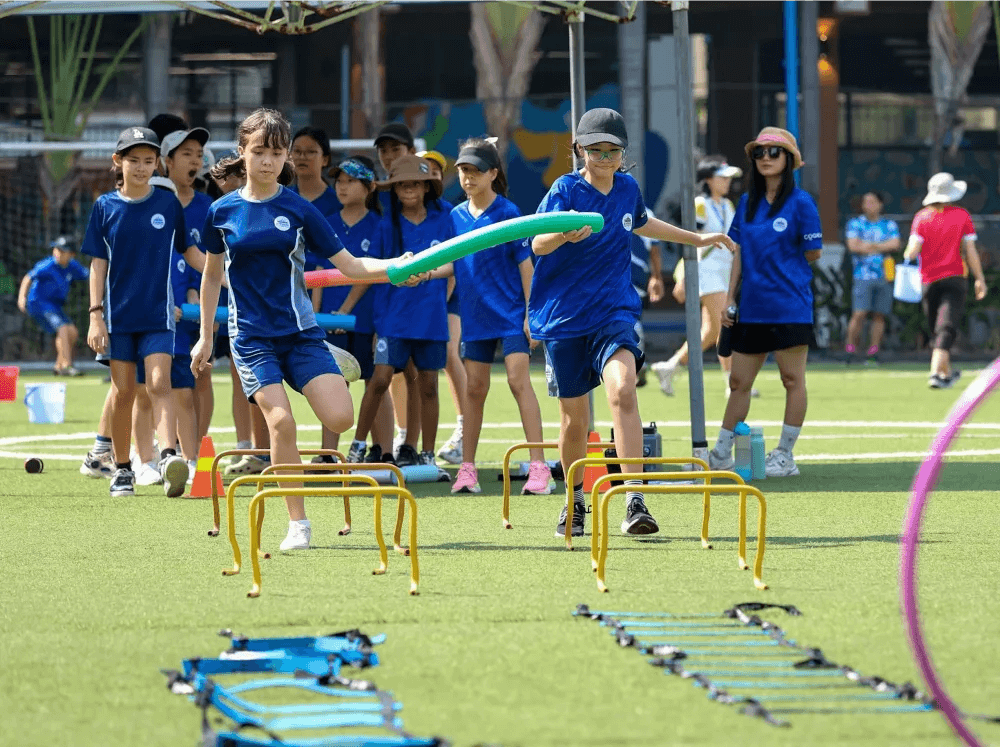
2. Obstacle Course: Provides a dynamic and fun way for students to develop their physical skills through various challenges, enhancing coordination and strength.
-
- Materials: Tunnel, cones, hula hoops, balance beam, pool noodles, exercise ladder, inflatable tire, hippity hop balls.
- Setup: Arrange the equipment to create a challenging and fun course. Use available space creatively to design the layout.
- Activity: Students navigate the obstacle course, which can be modified with various equipment. To add a competitive element, time each student to see who completes the course fastest.
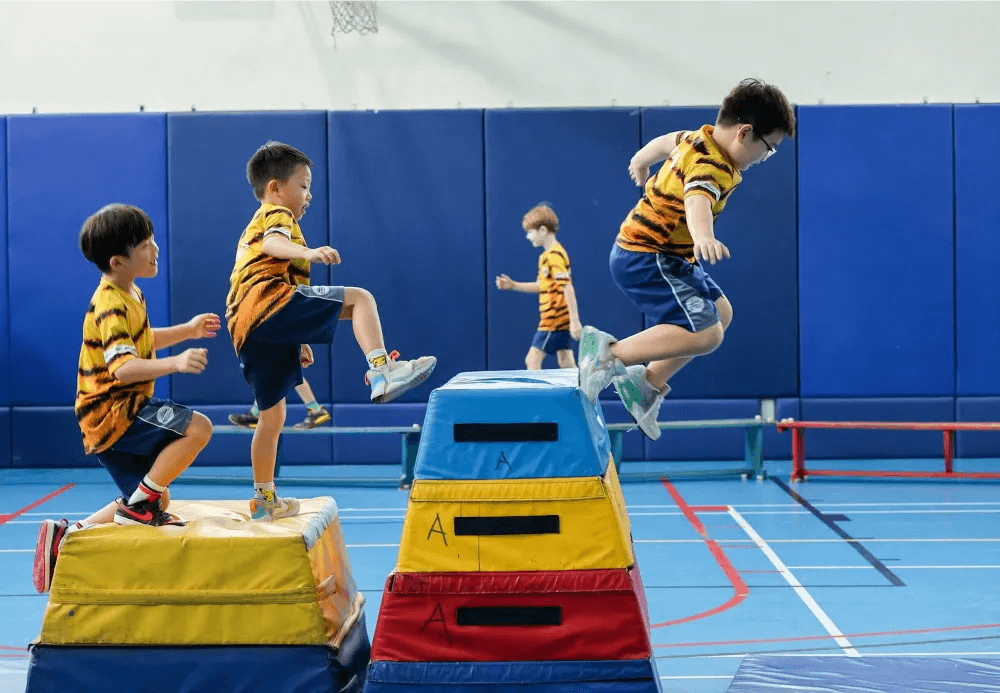
3. Color Hop: Integrate movement with learning by using colorful circles on the ground to teach color recognition and enhance gross motor skills.
-
- Materials: Sidewalk chalk.
- Setup: Draw several circles with different colors on the ground using sidewalk chalk.
- Activity: Instruct students to hop to a designated color, name it, and then move to another color. Incorporate different locomotor activities, such as walking, skipping, galloping, side-sliding, leaping, or running, to increase difficulty for older children.
4. Gardening: Offer hands-on learning experiences that connect students with nature and teach them about plant growth and environmental stewardship.
-
-
- Instructions: Engage students in gardening activities, allowing them to plant seeds, water plants, and observe their growth.
-
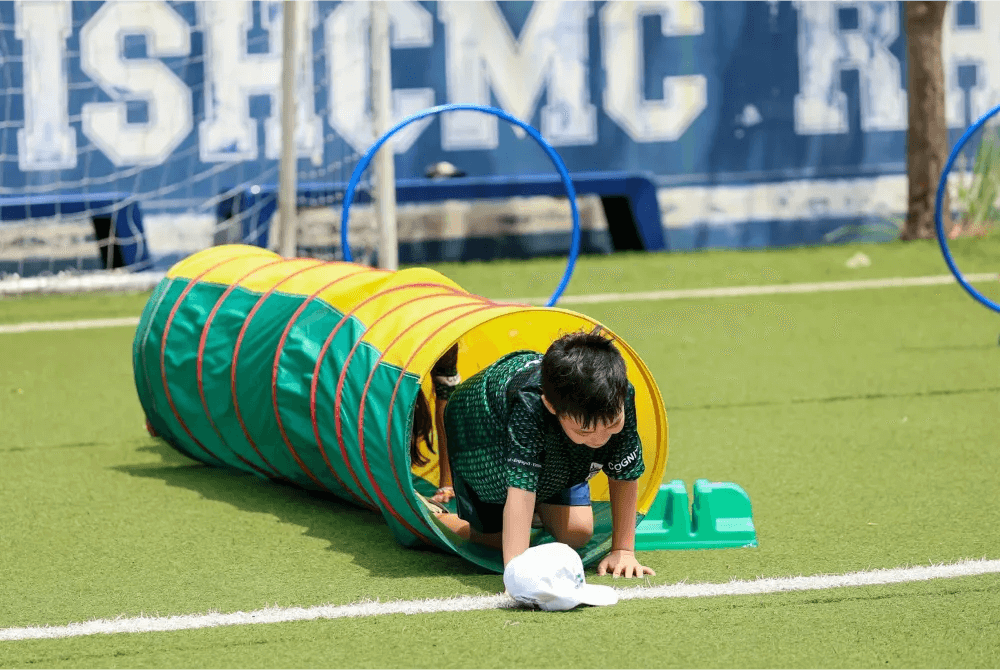
5. Simon Says Dance Party: Combine physical activity with imaginative play, using nature-themed commands to encourage movement and creativity.
-
- Rules: Host an outdoor dance party with nature-themed commands like “wiggle like a worm” or “flap your arms like a bird.” This activity combines physical movement with imaginative play, encouraging students to follow instructions creatively.
These activities foster learning and enhance students’ connection with the natural environment, providing a holistic educational experience.
Nurture Your Child’s Growth with Outdoor Learning at ISHCMC
At ISHCMC, we offer a dynamic Outdoor Education (OE) program that integrates with our Cognita Education curriculum to cultivate essential skills in students. Through carefully designed outdoor learning experiences, students gain resilience, self-confidence, and ecological awareness, aligning with the benefits of outdoor education in primary schools. Our program fosters a deep connection to nature, preparing students to become proactive, informed leaders in a complex world.
 Apply to ISHCMC today to enrich your child’s educational journey. Join us in nurturing your child’s growth and development through our innovative outdoor learning approach!
Apply to ISHCMC today to enrich your child’s educational journey. Join us in nurturing your child’s growth and development through our innovative outdoor learning approach!
Reference:
- Lieberman, G. A., Hoody, L. L., & Lieberman, G. M. (2000). California student assessment project phase two: The effects of environment-based education on student achievement. State Education and Environment Roundtable.
- Wells, N. (2000). At home with nature: effects of “greenness” on children’s cognitive functioning. Environment and Behavior, 32(6), 775-795.
- K. A. (2002). Influence of teaching in an outdoor classroom on kindergarten children’s comprehension and recall of a science lesson. [Graduate thesis and dissertation]. The Department of Curriculum and Instruction, University of Louisiana Lafayette.
- Mead, M. N. (2008). Benefits of sunlight: a bright spot for human health.
- Fjørtoft, I. (2001). The natural environment as a playground for children: The impact of outdoor play activities in pre-primary school children. Early Childhood Education Journal, 29(2), 111-117.
- Kuo, F. E., & Sullivan, W. C. (2001). Environment and crime in the inner city: Does vegetation reduce crime? Environment and Behavior, 33(3), 343-367.
- Taylor, A. F., Kuo, F. E., & Sullivan, W. C. (2002). Views of nature and self-discipline: Evidence from inner-city children. Journal of Environmental Psychology, 22(1- 2), 49-63.






